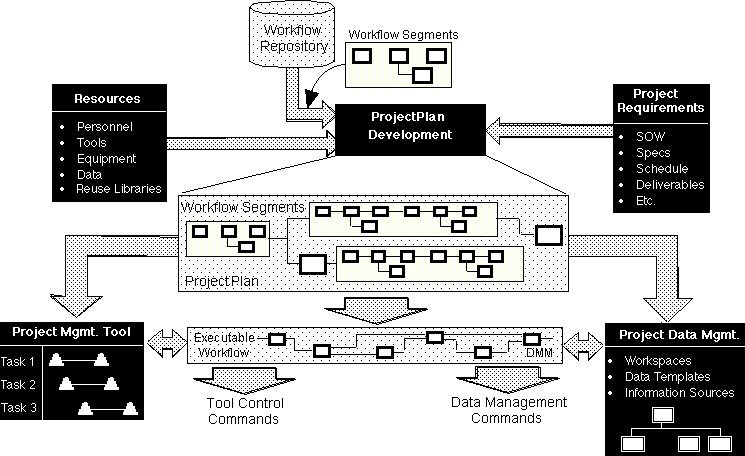Next: 6 Conclusion Up: Appnotes Index Previous:4 Tools
![]()
![]()
![]()
![]()
Next: 6 Conclusion
Up: Appnotes Index
Previous:4 Tools
RASSP design processes have been modeled in IDEF3 and IDEF3x. The to-be processes have been converted into DMM workflows to support design process automation. The information objects modeled in workflows represent place holders for instances of objects that will flow through the workflow. The workflows are hierarchical in nature - representing the various
disciplines associated with electronic design. The workflows consist of reusable workflow segments, which can be combined in various configurations to address specific project needs. These segments consist of multiple process steps, each of which
are also reusable. Thus, options available to a user organization are either to make use of the RASSP workflow templates in current form or to develop process plans based on a combination of reuse of RASSP workflow segments, individual process
steps, and possible custom user steps.
In supporting concurrent engineering in the RASSP methodology, multiple special case workflow templates were developed
and applied in domain specific workflows. These cases include:
To setup a new signal processor project, several process related activities occur (Figure 5 - 1). The project manager (PM) can make a copy of a previous project workflow and start tailoring it to the current project needs. The PM can add new workflow segments and modify existing ones based on the project requirements. Once the basic project plan is established, it is exported to a project planning software to schedule tasks and assign resources. The resulting workflows are updated with the business objects required for the project and appropriate objects are created in the PDM system. The workflows are now ready to be executed. The workflows provide appropriate configuration controlled information and tools to the users to perform a task. As the workflows are executed, appropriate project metrics are tracked and are also exported to project planning software. The workflows provide convenient mechanism for the entire project team to be aware of the project progress and
status.
Several useful process related products have been developed on the RASSP program that will benefit a much broader community. These products are summarized as follows:
5.0 Application to RASSP
The Rapid Prototyping of Application Specific Signal Processors (RASSP) program is a multi-year DARPA/Tri-Service
initiative intended to dramatically improve the process by which complex digital systems, particularly embedded digital
signal processors, are designed, manufactured, upgraded, and supported. The result is a powerful top-down, reuse-based,
virtual-prototyping design process and several novel process management capabilities including:

These RASSP products were used on multiple the RASSP benchmark programs.
System Requirements Analysis & Refinement, Functional Analysis, System Partitioning, Functional Design, Architecture Selection, Architecture Verification, Chassis Design, Backplane Design, etc.
![]()
![]()
![]()
![]()
Next: 6 Conclusion
Up: Appnotes Index
Previous:4 Tools